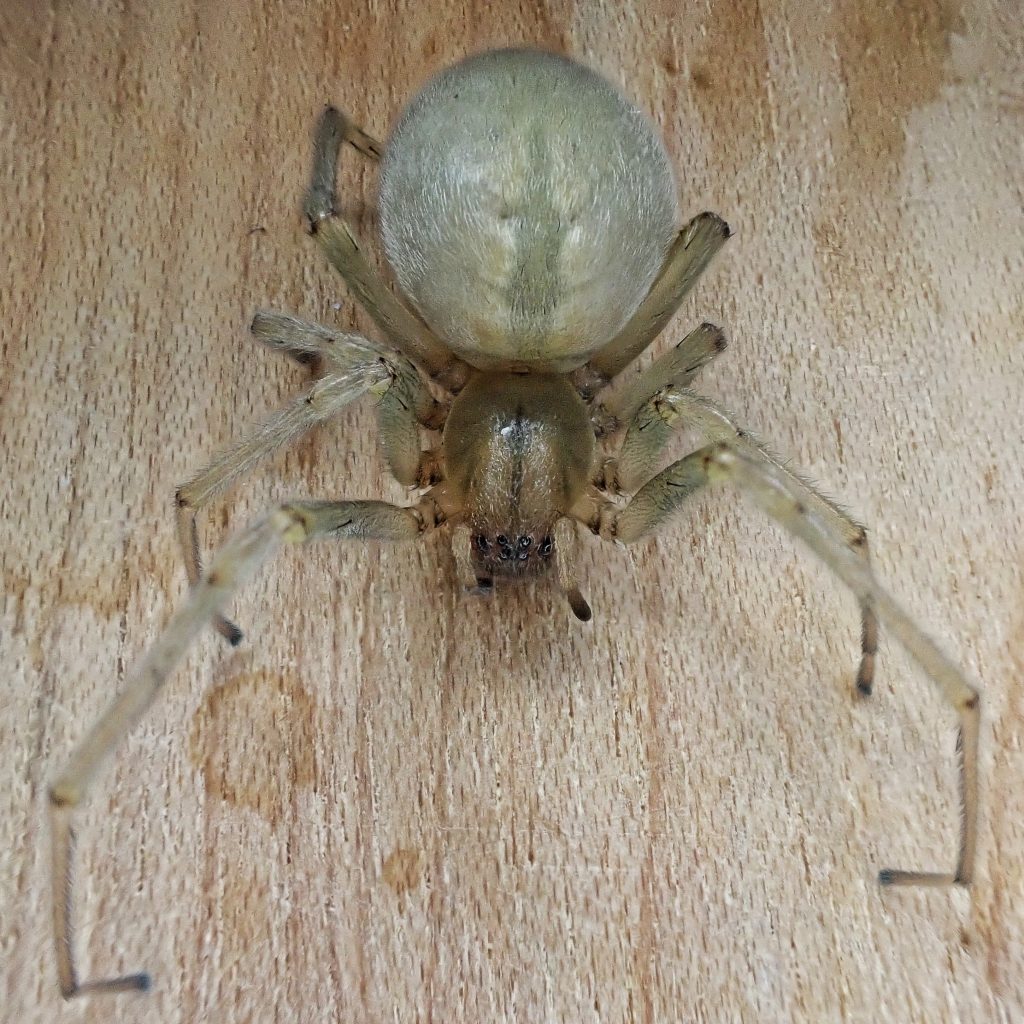
As I mentioned in ‘First mothing trip of the year’, there were several of these spiders prowling the area on and around my mothing setup, but I had no idea at the time what species they might be. After paging through several of my spider books, and becoming overwhelmed by the choices, I resorted to my Seek by iNaturalist app, which pointed me to the genus Cheiracanthium (which goes by the common names yellow sac spiders and long-legged sac spiders and which are in the family Miturgidae, commonly called the prowling spiders), of which there are only 2 members in North America. Still confused, I emailed Sarah Rose, author of Spiders of North America , who provided me with some resources to differentiate between the two, after perusal of which it was fairly obvious that this spider was Cheiracanthium mildei (which shares the common names yellow sac spider and black-footed spider with C. inclusum)
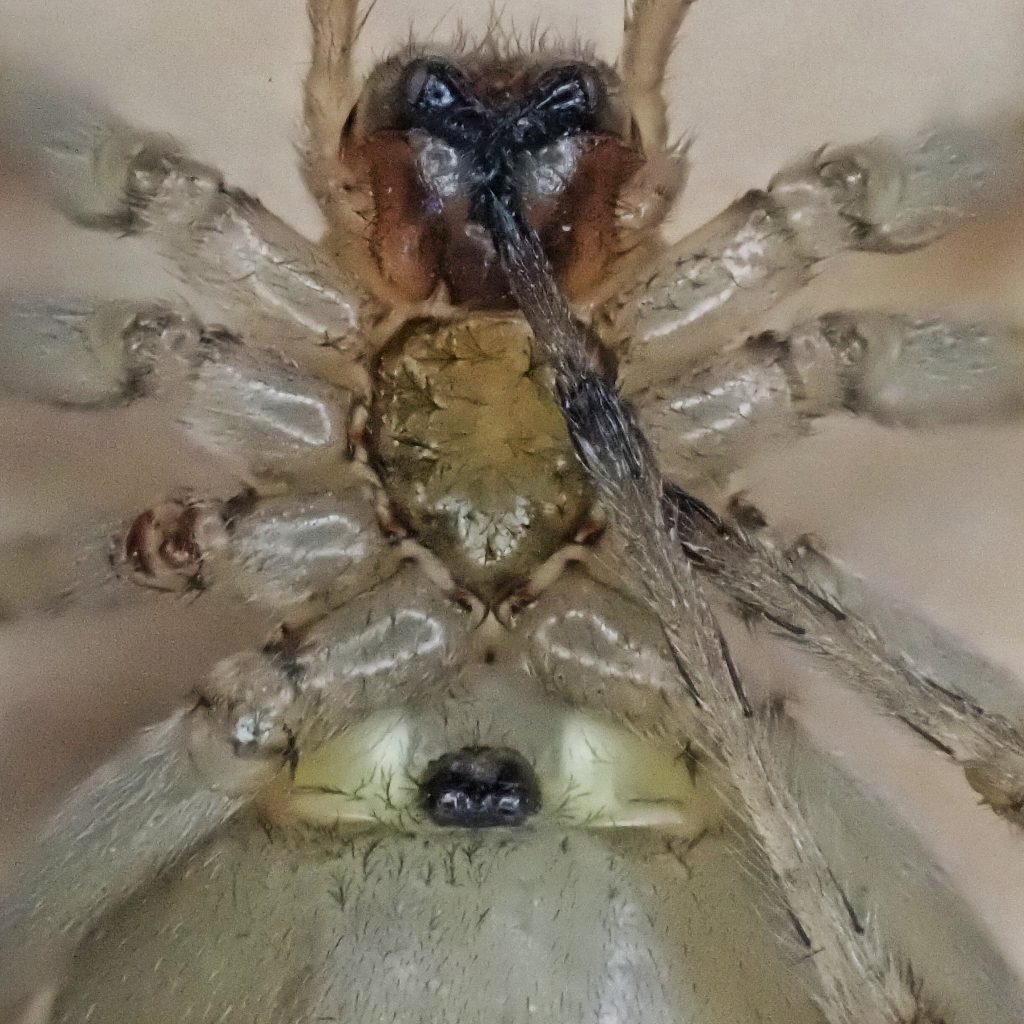
I was slightly disappointed that it wasn’t Cheiracanthium inclusum, since that is a native species which is more commonly found outdoors, while C. mildei is a European import that is most commonly found indoors, and whose numbers and range have grown exponentially since the 1950s. But it’s also always nice to find something that goes against the grain, though “Habitat is not the best way to separate them, though, as BugGuide does have photos of C. mildei found outdoors. Genitalia needs to be examined for a conclusive ID.” Species Cheiracanthium mildei – BugGuide.Net. And knowing what I now know, I’ll be keeping an eye out for C. inclusum when running lights or just exploring in areas away from human habitation. “Sac spiders are classified as hunting spiders. These spiders are very active at night and will emerge from their day resting sacs to run along walls and ceilings in pursuit of prey. If startled, they drop down on draglines and scurry away!” Species Cheiracanthium mildei – BugGuide.Net
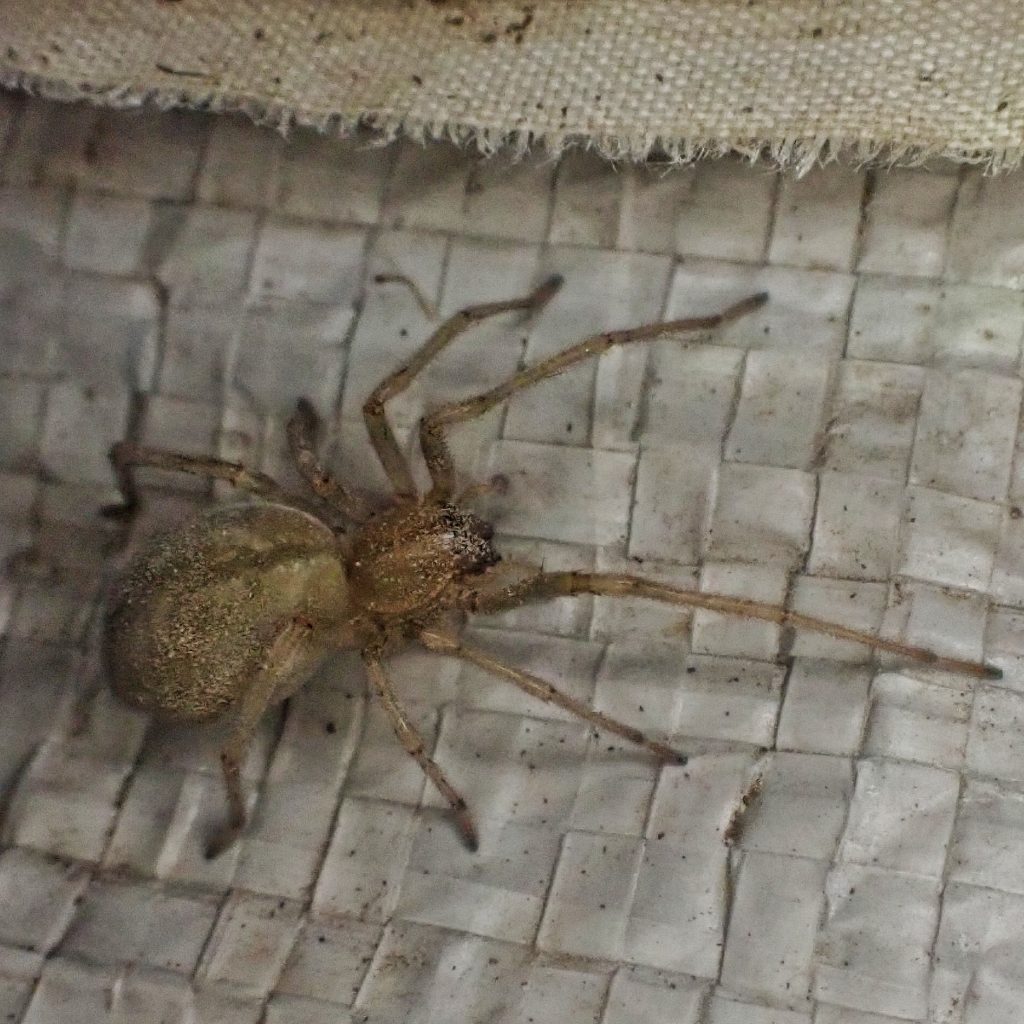
I did not find these spiders to be at all aggressive, but a number of bites are reported from the members of the genus Cheiracanthium, most commonly when they are trapped within clothing or pinned by a human body part, or when someone is attempting to collect them. Their bites have long been held to be medically significant, and to cause necrotic skin lesions. But, as Rod Crawford points out, “It turned out that the association of this spider with blisters and lesions was wrong, though accepted by everyone until recently. See the attached paper. I’d say this species ought to be taken off the medical concern list.” Species Cheiracanthium mildei – BugGuide.Net You can read the whole paper by Vetter, et al (2006) at https://citeseerx.ist.psu.edu/document?repid=rep1&type=pdf&doi=52a92c07e2115f62a6c7858cca3b8aeaf5442929 . The upshot is that, while they can deliver a painful bite, with the pain lasting up to several hours, and the bite is occasionally accompanied by symptoms of nausea and headache, there is no evidence at all to suggest that they cause necrosis in their victims. All of which simply means that getting bitten by one of these won’t be fun, but it won’t put one in the hospital, and certainly won’t kill even a small child.
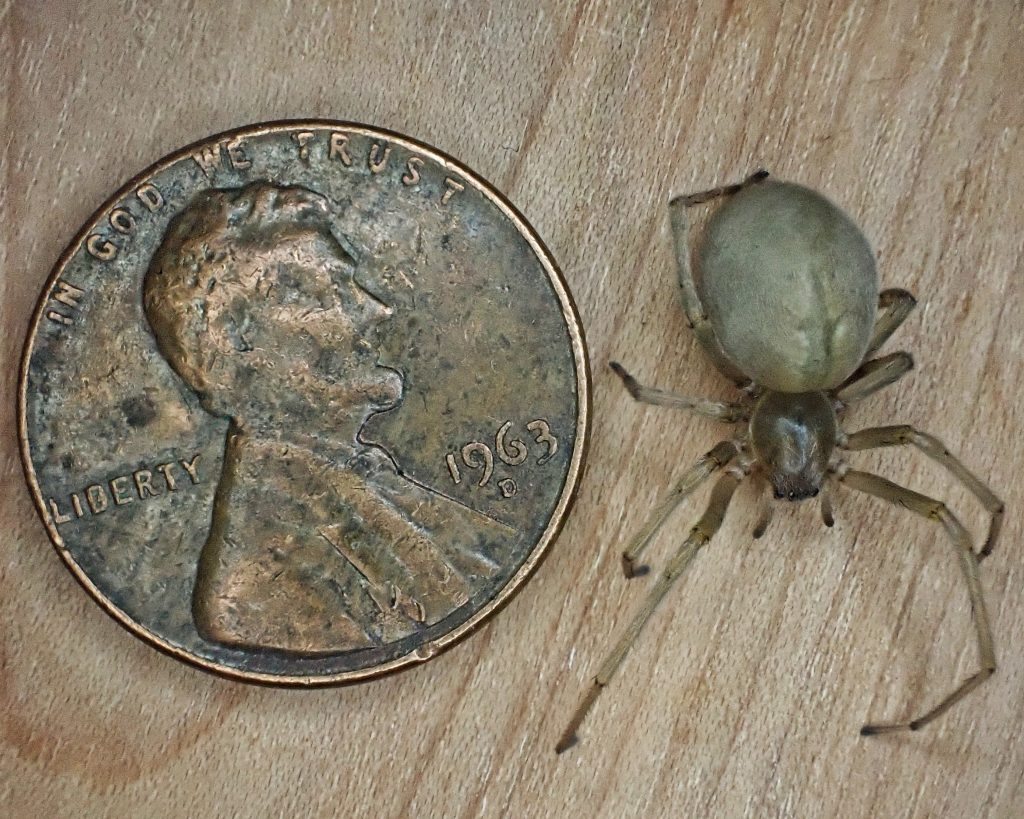
Description– Medium sized (4-9mm body length) yellowish to green or orangey tan spider with long thin legs of roughly the same color, but that often have darker tarsi; abdomen often has faint markings in the middle of the front portion, which arachnologists call ‘heartmarks’; carapace is usually slightly darker than the abdomen, and it is smooth with slightly darker markings; spinnerettes have a conical tip
Similar species– Cheiracanthium mildei and C. inclusum can only be positively differentiated based on genitalia- see the comparison photos at Genus Cheiracanthium – Long-legged Sac Spiders – BugGuide.Net Clubiona spiders have shorter, thicker legs, the spinnerettes are round-tipped, and they have a groove in the middle of the carapace.
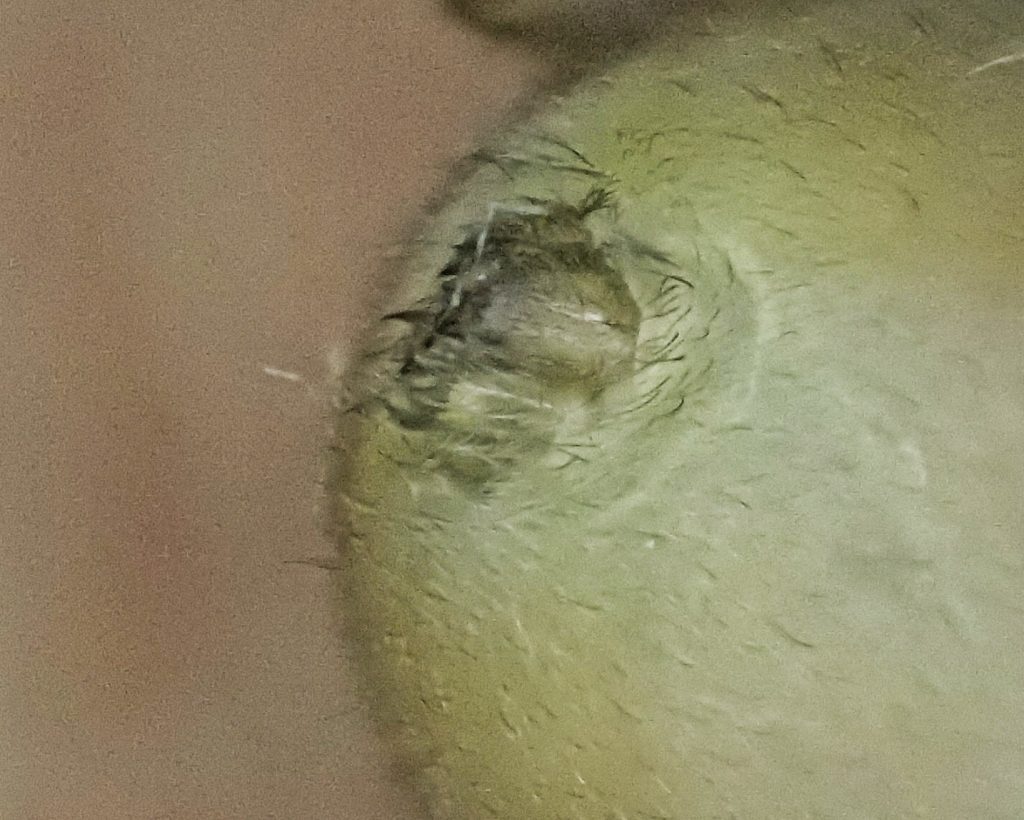
Habitat– “They make a resting tube in a rolled leaf or under bark or stones. ..More often found inside man-made structures (as opposed to C. inclusum which is found more often outdoors).” Species Cheiracanthium mildei – BugGuide.Net
Range– European native, now found throughout the northern Northern Hemisphere, and in southern South America; found region wide in the PNW.
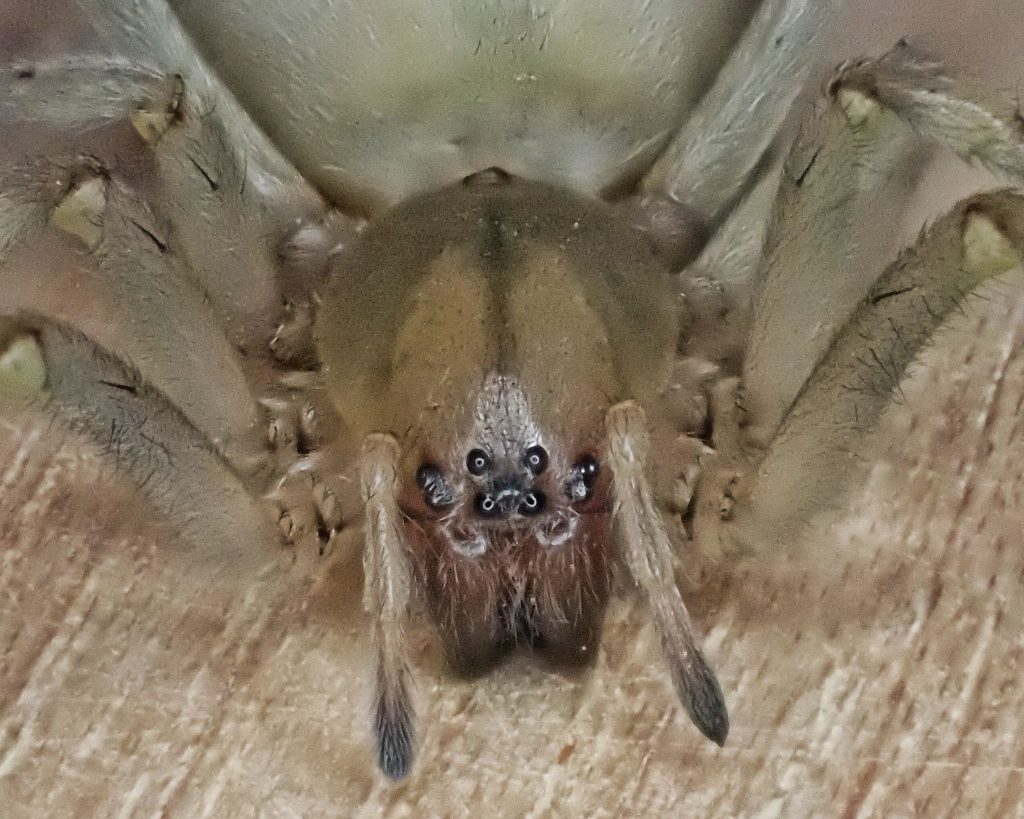
Eats– Small arthropods, especially larvae, and other spiders.
Eaten by– Probably most carnivorous birds and small mammals, and possibly by larger carnivorous arthropods.
Adults active– May be active year around when found indoors; outdoors specimens probably hibernate in winter
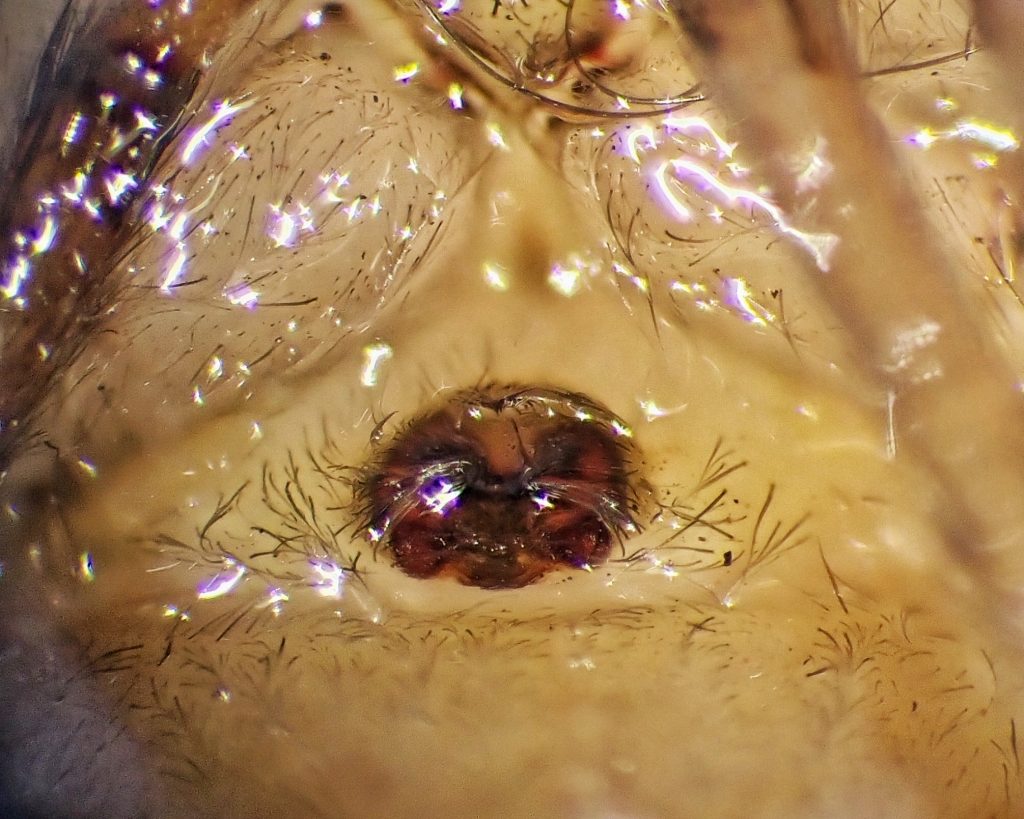
Life cycle– “After mating, females lay 30-48 eggs, cover them in a thin, white silken sac and guard them. The egg sacs may be found in protected areas, or even wrapped in a folded leaf. All stages of sac spiders make a silken cell (the “sac”), in which they rest when not active.” Species Cheiracanthium mildei – BugGuide.Net ; apparently may live up to two years
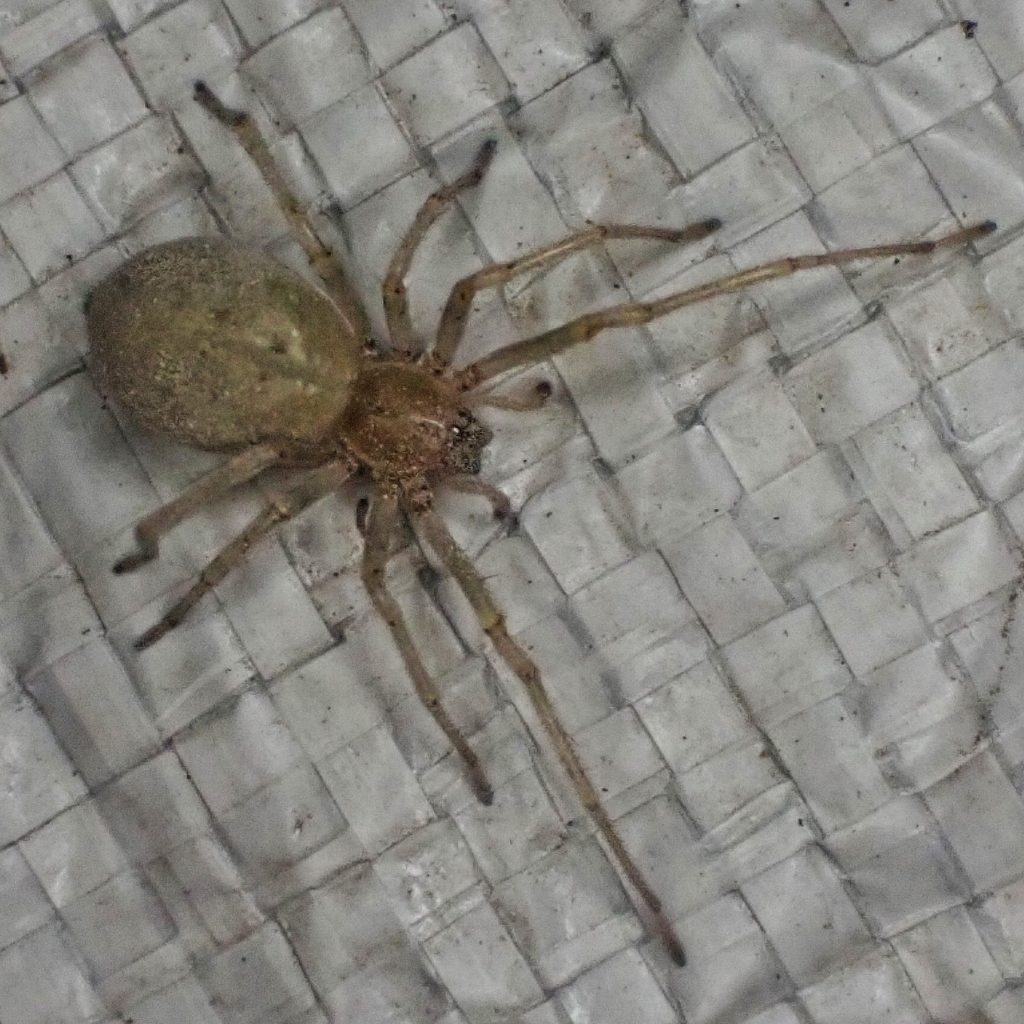
Etymology of names– Cheiracanthium is “From Greek, meaning “hand spinelet”, referring to the backwardly directed process on the cymbium of the male palp.” Genus Cheiracanthium – Long-legged Sac Spiders – BugGuide.Net. I cannot find any Latin or Greek words that seem to correspond to mildei, and I can’t seem to access L. Koch’s original description, so I can’t ascertain what mildei refers to, although I suspect it was an homage to a person.
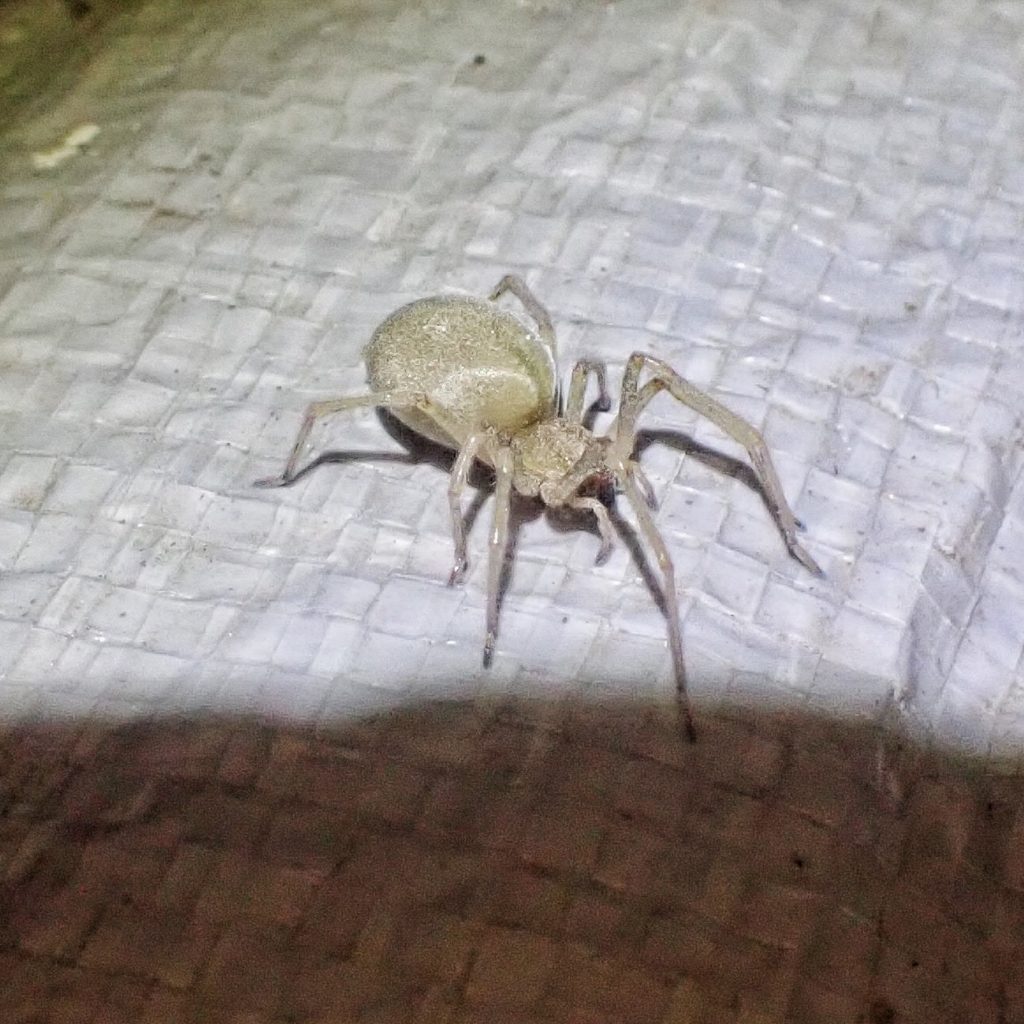
Species Cheiracanthium mildei – BugGuide.Net
Genus Cheiracanthium – Long-legged Sac Spiders – BugGuide.Net
https://extension.psu.edu/agrarian-sac-spider-and-longlegged-sac-spider/
Miturgidae Cheiracanthium mildei
Cheiracanthium mildei | Table Grape Spider ID
Should we be afraid of the Cheiracanthium mildei spider? | Blog | Space for life
Cheiracanthiidae Spider: Facts, Identification and Pictures
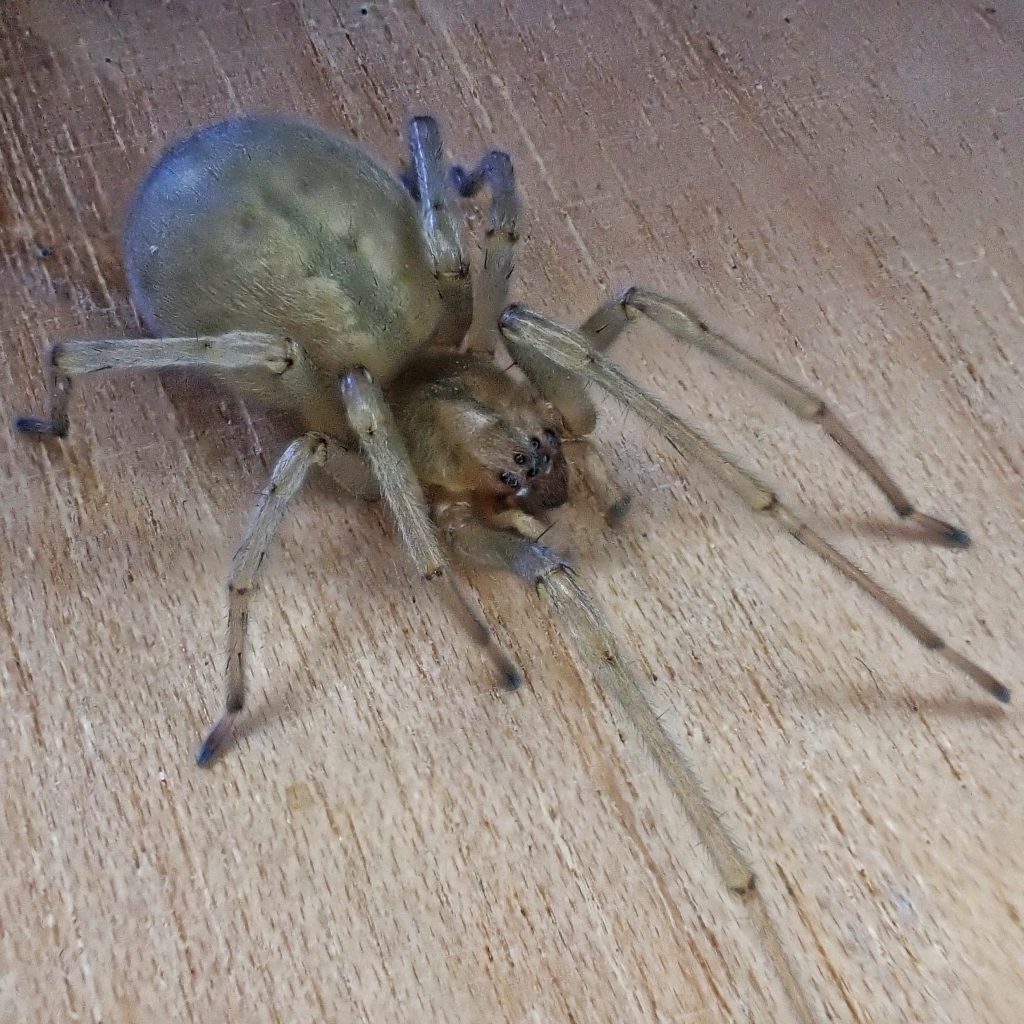
Another well-cooked morsel from you, Dan. Even without much previous interest, your seasonings do a lot to awaken my palate.
Thank you.
Thank you Brooke!